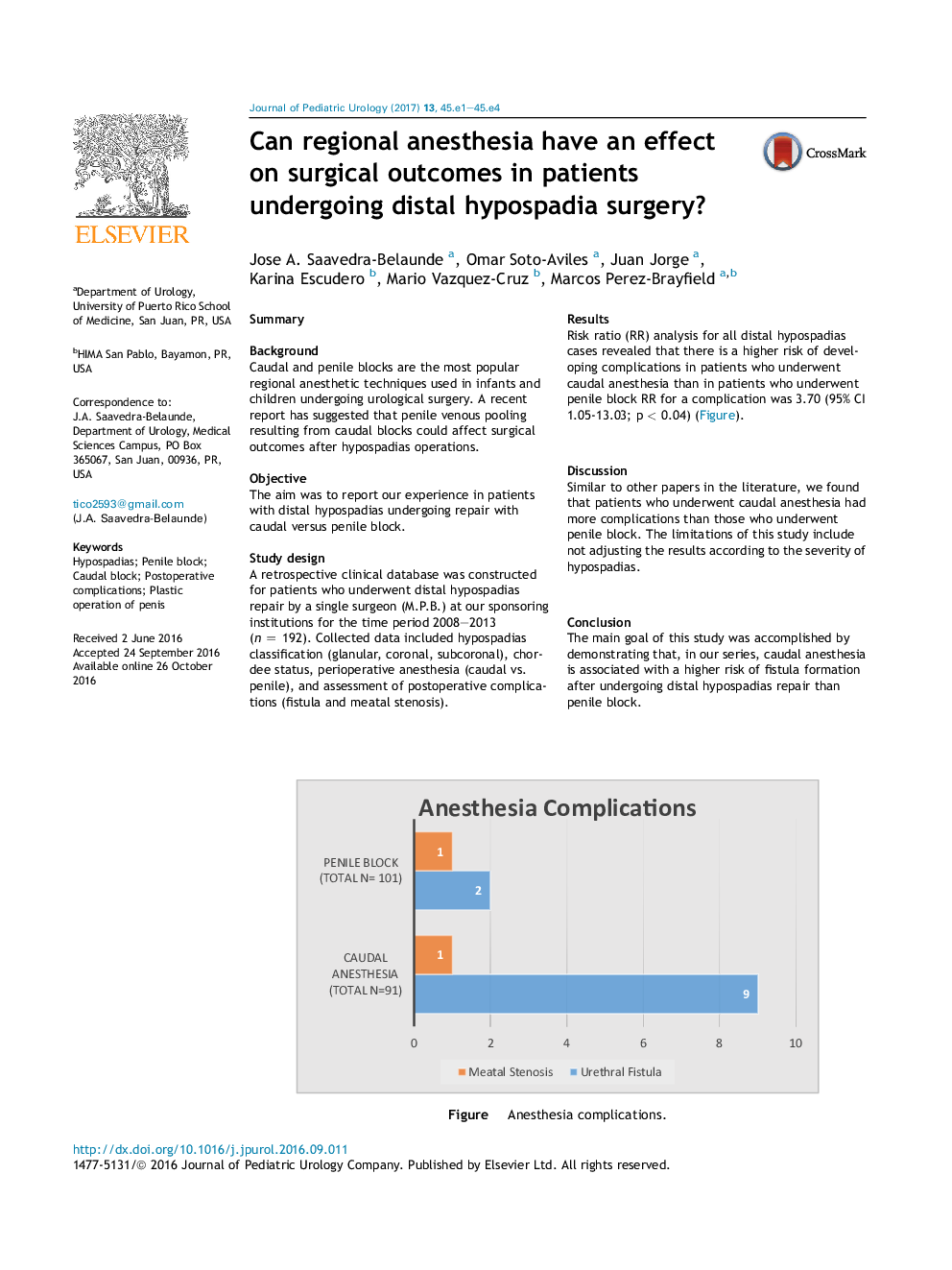| Article ID | Journal | Published Year | Pages | File Type |
|---|---|---|---|---|
| 5718649 | Journal of Pediatric Urology | 2017 | 4 Pages |
SummaryBackgroundCaudal and penile blocks are the most popular regional anesthetic techniques used in infants and children undergoing urological surgery. A recent report has suggested that penile venous pooling resulting from caudal blocks could affect surgical outcomes after hypospadias operations.ObjectiveThe aim was to report our experience in patients with distal hypospadias undergoing repair with caudal versus penile block.Study designA retrospective clinical database was constructed for patients who underwent distal hypospadias repair by a single surgeon (M.P.B.) at our sponsoring institutions for the time period 2008-2013 (n = 192). Collected data included hypospadias classification (glanular, coronal, subcoronal), chordee status, perioperative anesthesia (caudal vs. penile), and assessment of postoperative complications (fistula and meatal stenosis).ResultsRisk ratio (RR) analysis for all distal hypospadias cases revealed that there is a higher risk of developing complications in patients who underwent caudal anesthesia than in patients who underwent penile block RR for a complication was 3.70 (95% CI 1.05-13.03; p < 0.04) (Figure).DiscussionSimilar to other papers in the literature, we found that patients who underwent caudal anesthesia had more complications than those who underwent penile block. The limitations of this study include not adjusting the results according to the severity of hypospadias.ConclusionThe main goal of this study was accomplished by demonstrating that, in our series, caudal anesthesia is associated with a higher risk of fistula formation after undergoing distal hypospadias repair than penile block.Download high-res image (162KB)Download full-size imageFigure. Anesthesia complications.
